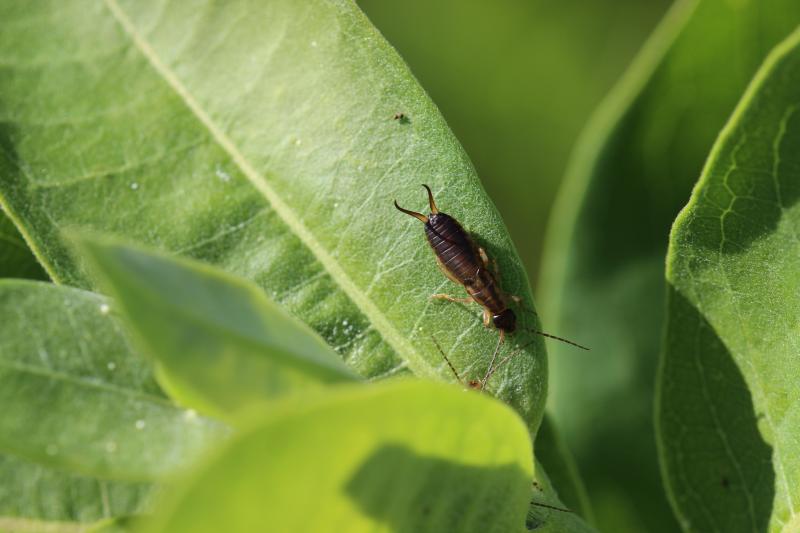
With the rainfall that we have been receiving in areas of Eastern South Dakota, one of our summer nuisance insect pests is starting to show up again. We have started to receive reports regarding earwigs in and around homes near Brookings, S.D. (Figure 1). Although earwigs may look intimidating due to the presence of their large pincher like cerci, they are actually an accidental invader of homes.
About Earwigs
The name earwig literally means “ear creature,” and was given to these insects due to a superstition that they would crawl into human ears and borer into the brain. Fortunately, these were just superstitions and earwigs are not known for crawling into people’s ears while they sleep. There are many different species of earwigs present in North America, with most being non-native. The most abundant and commonly observed is the European earwig.
Behavior
Typically, earwig populations go undetected; however, population explosions can occur during warm, humid periods in the summer. In 2016, we observed large populations of earwigs occurring around the same period of time in Eastern South Dakota. Earwigs are usually found under logs and other shade providing objects in the yard, especially in areas where the soil is moist. We have also seen that earwigs tend to congregate on milkweed plants.
In the Home
Earwigs can be found almost anywhere in the home, with areas surrounding the sinks in kitchens and bathrooms being the most common. These insects are scavengers and consume almost anything they find. Earwig entrance into a home can be difficult to block, as they are able to pass through very small spaces.
Initial Management Recommendations
- Examine doors and windows to make sure that they are properly sealed. Often, worn weather-stripping will permit the entrance of insects into a home.
- Remove any boards, logs, and decaying plant matter from around the home, as they provide moist habitats for earwigs. In some cases, these objects will actually attract earwigs.
- Traps can be used to catch earwigs inside and outside the home.
- Exterior perimeter insecticides can be used to effectively reduce invading earwig populations. Indoor perimeter sprays are also available and may further reduce earwig infestations.